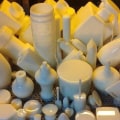When it comes to digital cameras, the button and dial layout is one of the most important aspects of the design and ergonomics. It has a major influence on user experience, and how easy it is to use the camera. In this comprehensive overview, we'll look at the different types of button and dial layouts, the pros and cons of each, and how they can be customized to fit your individual needs. We'll explore the various features that are available with various button and dial layouts, including direct access keys, quick-access settings, and customizable buttons. We'll also look at how they can be used in conjunction with other features, such as touchscreens, viewfinders, and other controls. By the end of this article, you will have a better understanding of button and dial layout options, and how to choose the best one for your camera.
Types of Buttons and Dials at 101photography.info
When it comes to digital cameras, buttons and dials are essential components of the design and ergonomics. There are various types of buttons and dials available, each with their own purpose and use.Mode dials:Mode dials are used to change shooting modes, such as setting your camera to take still images or record video. These dials are usually located at the top of the camera and can be moved to the desired mode with a simple push or twist.
Function buttons:
Function buttons are used to access different camera settings, such as white balance, ISO, and shutter speed. Some cameras may also have a dedicated button for taking a picture or recording a video. These buttons are typically placed around the back and sides of the camera.Control dials:
Control dials allow you to quickly and easily adjust settings, such as aperture and shutter speed.These dials are usually located on the back or side of the camera and can be used with one hand.
Touchscreen:
Many modern cameras feature a touchscreen display that allows you to access various camera settings with a tap or swipe. This makes it easy to adjust settings without having to move your hands away from the camera body.Impact on Image Quality
Button and dial layout can have a significant impact on the quality of your photos. In terms of design, having the right number of buttons and dials is important for ergonomics, but also for ensuring that you can access all the settings you need to take the best photos possible. The placement of these controls is also an important factor, as well as their size, shape, and texture.All of these elements need to be considered when designing a button and dial layout. The type of buttons and dials used can also influence image quality. Physical dials are often preferable to virtual buttons, as they provide more tactile feedback and can be operated faster. Additionally, certain types of buttons and dials are better suited to certain types of photography, such as rotary knobs for adjusting shutter speed or aperture on a DSLR camera. Finally, the overall layout of the buttons and dials should be intuitive and easy to use. Having too many buttons or dials can make it difficult to quickly access the right setting, while having too few can limit your ability to make adjustments.
A well-designed button and dial layout will allow you to quickly and easily access the settings you need without having to search through menus or guess where the right setting is located.
Ergonomic Considerations
Button and dial layouts are an important part of digital camera design and ergonomics. Ergonomics is the science of designing tools and environments to fit the needs of the user. When it comes to digital cameras, ergonomic considerations must be taken into account when designing a button and dial layout. The most important ergonomic consideration for button and dial layouts is comfort.The buttons and dials should be easy to reach and operate. They should also be placed in a way that does not require too much effort or awkward movements from the user. Furthermore, the buttons and dials should be clearly labeled so that the user can quickly identify them and know what they do. In addition to comfort, button and dial layouts should also be designed with accessibility in mind.
The buttons and dials should be large enough to be easily accessed by people with a range of abilities. For example, those who are visually impaired may need larger buttons that are easier to find by touch. Finally, button and dial layouts should be designed with ease of use in mind. Buttons and dials should be intuitively placed and labeled, so that the user can quickly understand how to use them.
Furthermore, users should be able to easily access important functions without having to search through multiple menus or layers of controls. When it comes to digital camera design and ergonomics, the button and dial layout is an important factor to consider. Different types of buttons and dials offer varying levels of control over camera settings and ease-of-use when taking photos. Additionally, the way buttons and dials are laid out can have an impact on the quality of your photographs. By understanding the different options available, photographers can select the best button and dial layout to meet their needs.




